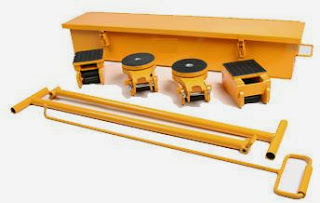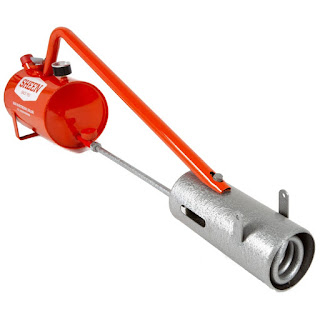What is the best way to sharpen a chainsaw?
In a lot of tool hire shops this is a question that is asked time after time, and especially during the peak chainsaw user time of Autumn (or the fall for our US readers) in the UK.
All chain saws utilise a "loop" type cutting blade that rotates around the saws drive sprocket and chain bar. When pressure is applied to timber this blade cuts through the wood with repeat cuts from each tooth on the saws blade. With natural wear and tear the loop blade will become blunt resulting in reduced cutting performance, to the extent that the saw will not cut at all if it is left in an unsharpened condition.
Oil lubrication goes a long way to preserving the useful life of a chainsaws blade, but it will not stop the blade becoming blunt during normal usage.
If you have ever used a chain saw and struck a nail or hard object with the bar you will also know that this will blunt a saws blade - and in a rapid time. The same goes if the end of the chain bar makes contact with soil, or the ground around a trees base or stump.
When the blade on a chainsaw becomes blunt you have two options, one is to replace the blade for a new one, the second option is to sharpen the blade.
Before you do either of these it is recommended that you check the whole loop of the blade to determine the overall condition with regards to wear, tooth damage, and also to see if the loop blade has stretched. If the latter has occurred then the only option is to replace with new, but otherwise you may be able to salvage the chain depending on the other factors.
Damaged teeth on a chainsaws blade can usually be fettled back into a serviceable order by way of using a metal file of the correct shape, size, and profile. Small nicks can be trued up as well as light scoring, but if you have any bent or twisted tooth's then again - a new replacement blade will need to be purchased and fitted.
After you have carried out a good inspection for wear, damage, and the overall condition of the blade, you can make the choice as to whether it is ok to have the blade sharpened or instead change it.
How to sharpen a chainsaw blade:
A garden machinery repair shop will usually be able to offer you a sharpening service where you can leave your blade for sharpening - with a cost to pay at the going rate. Depending on the length and condition of the blade this usually costs in the region of 40 to 50% of the new cost of a replacement loop blade.
Two other options are open to you: 1) you could invest in a manual chainsaw sharpening kit that comprises of a suitable file(s) and profile gauge or 2) invest in the purchase of an electric driven dedicated sharpening machine.
For most chain saw owners the first option is normally their preferred method, being the most affordable option especially when compared to the higher price of a dedicated sharpening machine.
View details on
chainsaw sharpening kits
How to sharpen a chainsaw blade:
To file and sharpen-up a chain saw's loop blade there is three (3) steps that need to be done, these are the filing of the top plate, filing of the side plate, and filing / profiling of the blades cutting angle and working "corner".
The top plate of each tooth requires filing to the correct angle as marked on the profile guide that is supplied in your sharpening kit. Using consistent and firm strokes your file should be drawn across the plate until the profile is correct. The same goes for the side plate, file the tooth's side plate until it matches the profile gauges indicator line. This is usually scribed on the profile gauge that is supplied in your chainsaw sharpening kit.
When it comes to the third stage you need to focus your time on the top area of each cutting tooth that is on the loop blade. This is the area that does most of the actual cutting so it is vital that this point is made sharp and filled to the correct shape.
The file gauge (which will have a slot cut into it's top) is placed over the first tooth which is to be sharpened, next the round file is placed next to the tooth's cutting edge, keeping the file level with the alignment mark on the profile gauge draw the file across the cutting edge using a firm pressure, you should notice resistance as metal is removed - so sharpening it. You then release the pressure on the return stroke. This action is then repeated until a clean "fresh metal" area can be seen. This clean area is the new sharp edge which you will have made to the chain saws blade.
Next, you should repeat this process on each and every one of the chain loop's teeth, by doing so will restore the saws chain to a good serviceable condition.
Hints and tips on sharpening a chainsaw blade:
- Try and sharpen the blade using a flat dry and clean surface
- Wear protective safety gloves and safety glasses
- Use a good quality sharpening kit (ie: Alm, Bosch, Black & Decker, Oregon, Stihl)
- Use a sharpening kit whose profile gauge is correct for your particular saw blade
- Assess the blade first for damage, excess wear, and stretching
- Clean the sharpened chain before fitting
- On refitting back your saw make sure its fitted correctly, and re-tensioned


